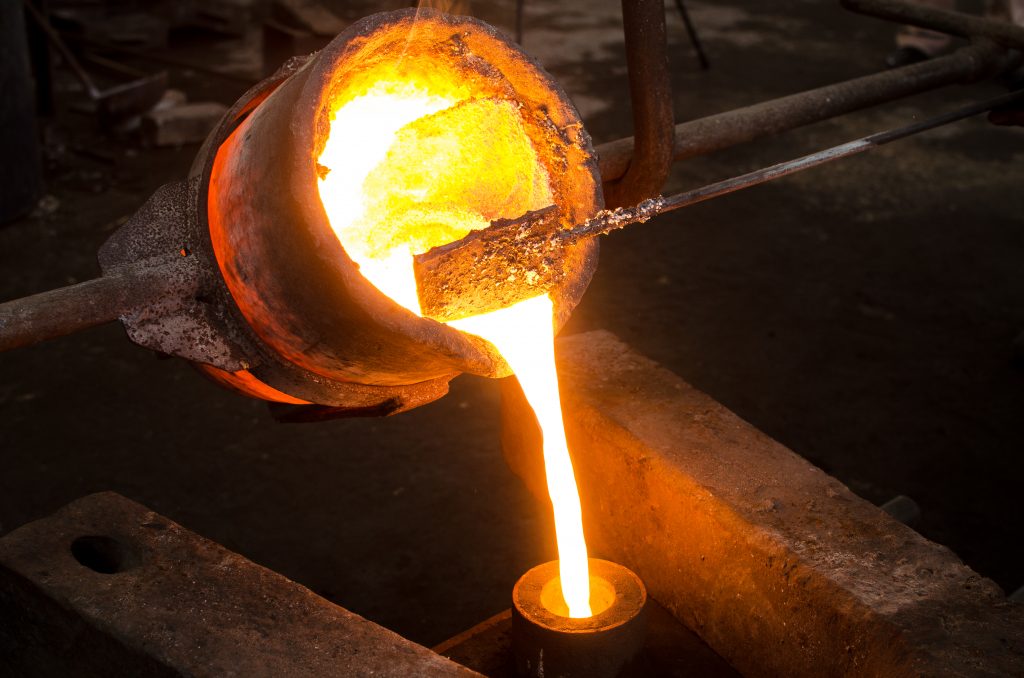Trading the Spike in Steel Prices
Complex market dynamics have pushed steel prices to record highs amid surging demand, Trump-era steel tariffs and President Joe Biden’s pending Infrastructure Plan.

Most investors and traders would probably be surprised to hear that the best performer in the S&P 500 so far this year does not hail from the technology sector.
Instead, it’s none other than the steel company Nucor Corporation (NUE), which has jumped by a jaw-dropping 94% since early January.
Interestingly, Nucor may not qualify as a technology company in the 21st century but back in the early 1900s, new steel-making techniques (such as the Bessemer process) were viewed as extremely innovative.
As evidence of that, one can’t overlook the fact that the first company with a market capitalization in excess of a billion dollars was actually an American steel company—the United States Steel Corporation (X) in 1901.
So what’s pushing the steel sector higher 120 years later? In four words: economic rebound, tariffs and infrastructure.
After steadily declining for the past several years, steel prices have gone on an incredible run since late last year, much like the prices of other important resources used in the manufacturing and building industries.
One of the best-known steel benchmarks—U.S. Midwest Domestic Hot-Rolled Coil Steel—is up nearly 250% since last July.
In early May, this steel benchmark rose above $1,600 for the first time in history. And as one can see in the chart below, that’s far higher than the average level observed during the last several years, which was well under $1,000.
So what’s pushing steel prices higher? One of the primary culprits, of course, relates to the ongoing COVID-19 pandemic.
Last spring, economic lockdowns across the world contributed to the shutdown of many global steel mills. Moreover, global producers scaled back on production due to fears of a pronounced recession.
And just like many other global manufacturers, steelmakers were caught off guard when demand snapped back much faster than expected. It’s no easy task getting immense steel mills back online.
And just like lumber and drywall, disruptions to the global supply chain have resulted in shortages and delivery delays for customer’s orders. Along those lines, it was estimated that unfilled orders for steel in the last quarter of 2020 were at the highest level in five years, while inventories were near a 3.5-year low.
As one might expect, those economic demand-supply dynamics have served to push prices much higher. And unfortunately, there’s another critical factor in play, particularly in the United States.
As most are aware, the previous administration in the White House initiated a series of tariffs on foreign-made goods that were intended to bolster the fortunes of American-made products. One such tariff was a 25% levy on imported steel.
The intent of a tariff (a tax paid by the importer of a foreign-produced good) is ideally to catalyze increased demand for locally-produced products (i.e. non-foreign). Or, at the least, to make the products of the targeted country (or countries) less economically attractive, as compared to other producers.
Interestingly, the tariffs weren’t necessarily that effective when they were first introduced. Steel prices continued to move lower in 2018, despite the initiation of the tariffs in March of that year.
Today, however, an argument can be made that the tariffs are serving to protect American steel mills as they ramp up activity to meet surging demand.
Unfortunately, there’s another side to the steel coin. End-users of steel in the United States are extremely unhappy with the tariffs, and blame them for the current shortages in the market—as well as extremely elevated prices.
Tensions have gotten so high that a group of 300 manufacturers got together and penned a letter to President Joe Biden asking him to remove the tariffs on steel. The research presented in that letter suggested that American manufacturers are paying up to 40% more for steel as compared to their European counterparts—a situation they view as untenable over the long term.
That means the current administration in Washington D.C. must now make some difficult decisions. The fact that much of the country’s steel is produced in electoral swing states like Ohio and Pennsylvania certainly won’t make those decisions any easier.
Complicating the matter further is the existence of Biden’s Infrastructure Plan. Because in order to rebuild the country’s infrastructure, American builders would theoretically need steel—and a lot of it. That makes the current shortages—and high prices—even more troublesome.
Taken together, that means the steel sector could be in for quite a ride during the foreseeable future as developments related to demand, tariffs and the infrastructure bill continue to push prices in one direction or the other.
As such, investors and traders may want to monitor the sector closely in the coming months to filter for potential opportunities. Listed below are some of the largest global steel manufacturers, as well as one of the best-known steel ETFs, which is already up 35% in 2021:
- ArcelorMittal (MT)—Luxembourg
- Nucor Corporation (NUE)—United States
- Cleveland-Cliffs (CLF)—United States
- POSCO (PKX)— South Korea
- Tenaris (TS)—Luxembourg
- Commercial Metals Company (CMC)—United States
- Gerdau (GGB)—Brazil
- Steel Dynamics (STLD)—United States
- U.S. Steel (X)—United States
- Worthington Industries (WOR)—United States
- Reliance Steel and Aluminum (RS)—United States
- VanEck Vectors Steel ETF (SLX)
To learn more about trading the steel sector, a previous installment of IRA Options on the tastytrade financial network is recommended.
For updates on everything moving the markets, readers can also tune into TASTYTRADE LIVE—weekdays from 7 a.m. to 4 p.m. CST—at their convenience.
Sage Anderson is a pseudonym. He’s an experienced trader of equity derivatives and has managed volatility-based portfolios as a former prop trading firm employee. He’s not an employee of Luckbox, tastytrade or any affiliated companies. Readers can direct questions about this blog or other trading-related subjects, to support@luckboxmagazine.com.



















